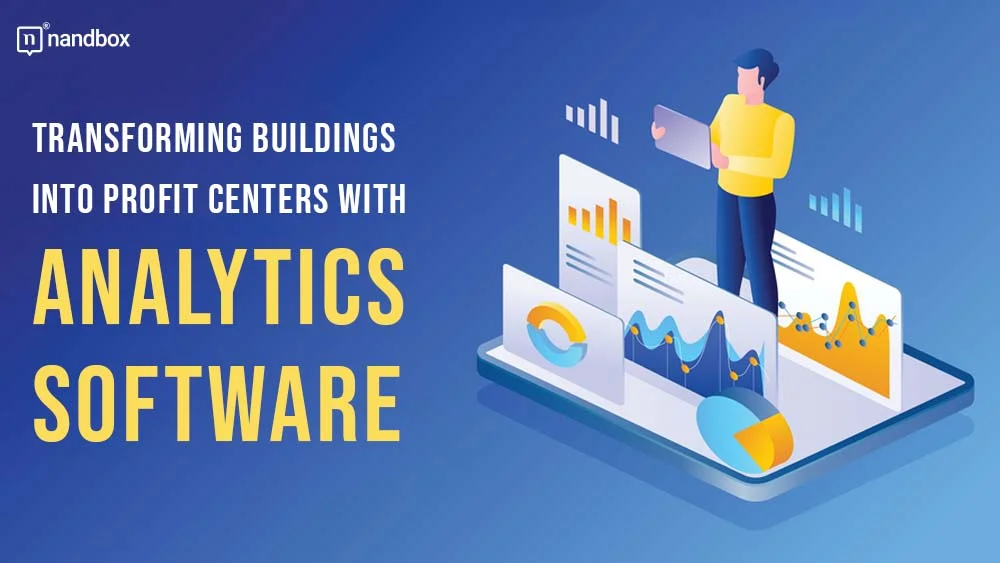Imagine a towering skyscraper not just as a marvel of architectural prowess but as a vibrant, dynamic entity that thrives on data. Picture it constantly adjusting its internal environment to optimize comfort and efficiency, reducing energy costs while simultaneously enhancing tenant satisfaction. This isn’t the plot of a futuristic novel; it’s an emerging reality made possible by advanced analytics software. As technology evolves, so too does our ability to transform static structures into responsive profit centers.
In today’s competitive real estate market, property managers and building owners face mounting pressure to maximize asset value while minimizing operational expenses. In this article, we will discover more about analytics software—a game-changer that leverages big data, IoT sensors, and machine learning algorithms to provide actionable insights. These tools enable buildings to think, predict maintenance needs before they become costly repairs, optimize space utilization based on actual usage patterns, . Additionally, HVAC load calculation software plays a crucial role by ensuring that heating and cooling systems operate at peak efficiency and even adjust lighting or HVAC systems in real-time for peak efficiency. The result? A dramatic shift from passive asset management to proactive performance enhancement—turning every square foot into an opportunity for increased profitability.
Unlocking Revenue Opportunities Through Building Analytics
Imagine a world where every corner of your building whispers profit secrets. Building analytics software transforms this vision into reality by turning mundane operational data into strategic revenue opportunities. Coworking spaces software helps maximize how space is used, adding another layer of potential revenue for property managers. One significant avenue is energy optimization; these intelligent systems can scrutinize energy consumption patterns, identify inefficiencies, and provide actionable insights to reduce costs. The savings on utility bills alone can be substantial, often freeing up capital for reinvestment or other crucial operational needs.
Moreover, predictive maintenance supported by advanced analytics ensures that equipment failures are not just responded to but anticipated and prevented. This proactive approach minimizes downtime and avoids costly emergency repairs while extending the lifespan of critical assets. Additionally, through occupancy tracking and space utilization metrics, you can uncover underused areas within your facility that could be repurposed or leased out for additional income streams. By leveraging these sophisticated data tools, you’re not merely maintaining a building; you’re cultivating a dynamic profit center right under your roof.
Identifying Cost-Saving Measures with Data Insights
One of the most transformative aspects of integrating analytics software into building management is the capability to harness data insights to identify cost-saving measures. This sophisticated technology sifts through vast amounts of operational data, uncovering inefficiencies that might otherwise go unnoticed. Imagine pinpointing specific hours when energy consumption peaks unnecessarily, or discovering underutilized spaces that continue to incur substantial maintenance costs. These revelations enable managers to implement targeted adjustments without compromising comfort or functionality.
Moreover, predictive analytics brings a proactive dimension to cost savings by forecasting potential issues before they escalate into expensive repairs or downtimes. By leveraging historical performance data and real-time sensor inputs, such systems can predict HVAC system failures, water leakage prospects, or even patterns indicating escalated wear and tear in building infrastructure. Thus empowered with actionable insights, facility managers can prioritize preemptive maintenance and strategic upgrades that not only cut costs but also enhance the overall longevity and reliability of their assets.
Enhancing Tenant Satisfaction to Drive Profitability
Harnessing tenant satisfaction as a lever to drive profitability is often an untapped goldmine in the real estate business. By leveraging advanced analytics software, building managers can gain unprecedented insights into tenant behaviors, preferences, and needs. This data-driven approach allows for tailored solutions that not only enhance the living experience but also foster long-term tenant retention. Imagine knowing precisely when tenants prioritize amenities like gyms or communal workspaces; such information enables targeted investments that directly influence occupancy rates and rental yields.
Furthermore, analytics software goes beyond simply understanding what tenants want—it enables predictive maintenance and optimized resource allocation. When tenants see swift resolutions to their concerns and minimal disruptions due to well-managed facilities, their satisfaction levels soar. Happy tenants are more likely to renew leases and even promote the property through word-of-mouth, essentially becoming ambassadors of the space they occupy. This virtuous cycle transforms buildings into thriving profit centers where high satisfaction correlates directly with increased revenue streams.
Maximizing Efficiency and Value with Advanced Analytics
Advanced analytics has revolutionized the way we approach building management, making it possible to maximize efficiency and optimize value like never before. Cutting-edge software tools can now sift through massive amounts of data in real-time, unveiling patterns and insights that were previously hidden. Imagine a system that not only identifies energy waste but also predicts future maintenance needs, ensuring equipment longevity and operational continuity.
What sets advanced analytics apart is its ability to integrate disparate data sources into a cohesive strategy for improvement. For instance, by merging data from HVAC systems with occupancy sensors, facility managers can precisely adjust climate control settings to match actual use patterns, reducing energy consumption without sacrificing comfort. This holistic approach doesn’t just save money; it also enhances tenant satisfaction and fosters sustainable practices. Ultimately, embracing these sophisticated tools transforms metal buildings from mere structures into dynamic profit centers that adapt and thrive in an ever-evolving market landscape.
Optimizing Energy Usage for Financial Gains
Leveraging analytics software to optimize energy usage in buildings isn’t just good for the environment; it’s a strategic financial play. Advanced algorithms can scrutinize energy patterns, identifying inefficiencies that human oversight might miss. Imagine pinpointing exactly which HVAC settings waste the most power and adjusting them in real-time to mitigate these losses. Consequently, this precision not only slashes utility bills but also extends the lifespan of critical building systems by preventing overuse.
What often goes unnoticed is how this optimization can unlock new revenue streams. Peak load management through demand response strategies allows companies to sell back surplus energy during high-demand periods, effectively turning their buildings into tiny power plants. Additionally, adopting a greener profile increases property value and attractiveness to sustainability-focused tenants, who are willing to pay higher rents for eco-friendly spaces. The bottom line: streamlined energy usage elevates operational efficiency while simultaneously generating unexpected financial rewards—making your building itself a profit generator rather than merely an expense on your balance sheet.
Leveraging Predictive Maintenance to Reduce Operational Costs
Predictive maintenance is revolutionizing the way businesses manage their building operations, drastically slashing operational costs and enhancing efficiency. By employing advanced analytics software, organizations can now foresee equipment failures before they occur, scheduling timely interventions that prevent costly unplanned downtimes. This proactive approach not only extends the lifespan of critical assets but also reduces expensive emergency repair work.
Additionally, the data harnessed from predictive maintenance allows for optimized resource allocation, ensuring that maintenance efforts are focused precisely where needed. Informed decision-making achieves more streamlined operations and significant cost savings by reducing unnecessary labor and material expenses. Buildings that utilize this technology, for instance, CIM, transform from cost centers into profit centers as they continuously operate at peak efficiency with minimal disruptions.





